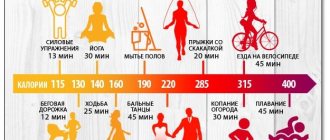The benefits of dancing for losing weight and improving health
Like most forms of aerobic or cardio exercise, dancing has many health benefits, including weight loss.
Apart from burning a lot of calories, dancing can also increase your muscle strength. Building lean muscle mass can help you burn fat and tone your muscles.
Some of the health benefits of regular cardio exercise such as dancing include:
- increased endurance
- improved mobility and flexibility
- better sense of balance
- improved blood flow
- stronger immune system
- better quality sleep
- stress reduction
- reducing the risk of developing certain chronic conditions such as diabetes and heart disease
Dancing is also good for mental health. Aerobic exercise can help improve your mood and reduce your risk of depression.
Dancing has additional benefits because it is often performed in a social setting. Dancing with a partner or in a group can create a sense of community and help you feel more connected to other people.
And just as importantly, it's a fun activity. When you enjoy doing something, you are more likely to continue doing it. That's why dancing can be a great way to stay motivated when it comes to exercise for weight loss.
Burn calories dancing
Dancing is an aerobic activity, during which the body is saturated with oxygen and actively burns fat in muscle tissue. This is a very simple and affordable way to achieve a toned figure and smooth skin without signs of cellulite. You don’t need any special equipment (except for half-dancing) and you don’t need to trudge across the city to the sports club either. You can dance at home, on vacation, and wherever you are in the mood to warm up.
The number of calories you burn while dancing depends on your weight, age and duration of the activity. On average, a dancer weighing 50 kg burns about 250 calories per hour of moving to music. With a weight of 75 kg, the body will spend 390 calories, and with a weight of 115 kg - already 580 calories per hour of exercise.
Choosing the right dance genre is very important. Ballet is considered the record holder for calories burned. But ballroom dancing is located at the very last step in the ranking of fat-burning dances. However, first things first.
Ballet
An hour of performing classical steps burns from 560 to 960 calories, depending on the weight of the dancer. This is on par with an hour of accelerated running and a third more than when swimming fast crawl. Classical dancing trains muscles, gives amazing posture and grace.
Aerobic dancing
The higher the intensity, the greater the calorie loss. Aerobic dancing with a high load (in fact, this is already active aerobics) allows you to burn 350-620 calories per hour of class. Dancing with moderate intensity and a calm pace burns 160-280 calories. Such physical activity has a great effect on the skin: it tightens, sagging and cellulite disappear.
Zumba
A combustible blend of Latin expressiveness, aerobics and fitness, it's a great way to have fun burning 400-550 calories per hour.
Dancing to the disco rhythm
An energetic disco burns 300-500 calories per hour. So colored leggings will help you, and hurry up to the dance floor.
Pole dance
Active body movements on the pole will make you slimmer by 300-480 calories per hour. For comparison, an hour of race walking burns an average of 400 calories. There is no need to talk about the appetizing shapes of the breasts, abdomen, buttocks and legs (the main problem areas prone to cellulite!), as well as the delicious plasticity and sexuality.
Belly Dance
Belly dancing is great for weight loss, improves coordination of movements, and trains the muscles of the abdomen, arms, back, hips and legs. This type of dance is also worth mastering for those who want to restore their figure after childbirth or improve women's health. In an hour of training you can burn 300-450 calories.
Club dancing
Surprisingly, even enjoying the rhythm in a nightclub or disco, you can get rid of 400 calories in an hour of pleasure and get closer to reducing cellulite. Club dances for weight loss can be danced at home; they are suitable for any age, sports skills and can be performed to any music. In addition, they give a feeling of self-confidence.
How many calories can you burn dancing?
As with most forms of exercise, faster, more energetic forms of dancing burn more calories than slower ones. For example, hip-hop burns more calories than ballroom dancing.
Below are some examples of how many calories you are likely to burn in 30 minutes of dancing if you weigh 75 kilograms. If you weigh less, you'll likely burn fewer calories, and if you weigh more, you'll likely burn more.
Calories burned in 30 minutes of various dances:
- Ballet : 179 calories
- Ballroom dancing : 118 calories
- Hip-hop : 207 calories
- Salsa : 143 calories
- Swing : 207 calories
- Country dancing : 172 calories
- Tap dance (step) : 164 calories
The U.S. Department of Health and Human Services recommends that adults get at least 150 minutes of moderate-intensity exercise or 75 minutes of vigorous-intensity exercise each week to improve health, including weight loss.
So, if dancing is your main form of exercise, the amount of time you spend on it depends on how vigorously you dance.
If you want to lose significant weight (5% or more), experts recommend at least 300 minutes of moderate-intensity exercise per week.
Dependence of energy loss on body structure
There are three types of structure:
- ectomorph;
- mesomorph;
- endomorph.
The former are characterized by thinness, long limbs, narrow palms and feet, and an almost complete absence of fat. Such a representative spends energy 5-8% faster.
The latter are characterized by a developed muscular system, a long torso, and broad shoulders.
The following indicators refer specifically to them as the most common representatives.
An endomorph can be distinguished by a rounded face and body, and an impressive volume of subcutaneous layer.
He burns calories 6-9% slower than a mesomorph because existing fat slows down his metabolism.
When considering the appropriate type of physical activity to maintain an optimal weight, you need to consider your own body structure. Now it’s worth clarifying the number of calories burned with different mobility using the example of a person weighing 70 kg.
Options for dancing and losing weight
There are many different types of dance, all of which have health benefits and potential weight loss benefits.
Many gyms offer dance classes, and there are plenty of online dance videos that you can try to figure out which form of dance is right for you.
If you prefer something less structured, you can also just turn on your favorite music in the living room and dance for 30 minutes or more. If you move and get your heart rate up, you will benefit and burn calories.
If you are interested in certain types of dances, here are some popular dance options for exercise and weight loss.
Zumba
Zumba is a dance fitness program with Latin American and other international music.
She uses interval training, alternating fast and slow movements. These short bursts of high-intensity exercise will help you burn even more calories than just dancing at a constant speed. And it's a full-body workout, so you can tone and strengthen many of your muscles.
Zumba has many other health benefits, including the following:
- weight loss, average 9.5 calories per minute
- decreased pain sensitivity, according to a 2016 study
- social benefits and sense of community as it is a group workout
Zumba choreography doesn't have to be formal, so you can join in on the go. Many gyms and community centers offer classes suitable for all fitness levels.
Daily calorie requirement
on average, women need 2000 kcal, and men - 2500.
The average person needs a minimum of 1600 kcal,
entering the body with food, provided that it is at rest all day. Women who are at least slightly active need 2000 kcal, men - 2500.
Unfortunately, a sedentary lifestyle and unhealthy diet lead to extra pounds.
Later, people begin to take care of their body by doing various types of exercises.
There is an empirical formula for determining the vital number of calories.
For women it looks like this:
9.99 × weight (in kg) + 6.25 × height (in cm) - 4.92 × age - 161;
To calculate the indicator for men, the number “5” is added to the result.
If the goal of playing sports is to achieve optimal weight, you must follow the rule: the number of calories burned should exceed the number consumed by 20%.
For example, according to the above formula, 1600 kcal was obtained. Then, to achieve normal conditions, you need to burn 320 kcal per day. How to do this is everyone’s personal choice; some choose intense physical exercise, others choose long-term cyclic exercise. Before considering in detail how to burn calories, it is worth turning to the natural data of a person.
Hip-hop
Hip-hop dancing is a high-intensity, high-performance form of dance. It includes everything from breakdancing to modern dance moves. Some gyms may offer hip-hop classes, but there are also many online videos that can help you learn hip-hop choreography.
Benefits of hip-hop dancing:
- burning calories
- muscle strength, especially leg and core strength
- increased agility and coordination
Many hip-hop dances involve repetitive movements. These moves can lead to injury if done incorrectly or if you don't give yourself time to rest between dance sessions.
Body Ballet - grace and becoming
- Suitable for:
ballet lovers and those who dream of the figure of a ballet dancer. - What muscles does it train:
back, legs and abs. - How many calories are spent during training:
4–5 kcal per hour per 1 kg of weight. - The result after six months:
noticeably improved posture, coordination of movements, grace. The figure is approaching an achievable ideal.
average.
Essentially, this is ballet with elements of yoga, Pilates and cardio. It’s very beautiful, even though the dancers don’t practice in fluffy tutus, but in sportswear. In the group for beginners, the exercises are not very difficult, there is a lot of stretching. Some of them are performed at the ballet barre, if there is one in the hall. I had. For an hour and a half I felt like a ballerina.
There are no clearly regulated rules in body ballet - the coach focuses on either the dance or sports component, depending on the wishes of the students and his own experience. In my case, it was more of a classical ballet, measured and boring, with long repetitions of the simplest elements.
Ballet
Ballet is a form of classical dance that emphasizes precise movement and technique. Although the slow movements of ballet may not burn as many calories as other types of dance, they can still help improve your health and fitness through:
- increased muscle strength and tone, especially in the legs and core
- increasing flexibility, dexterity and coordination
- improving your posture
Many dance studios offer ballet classes for all levels.
If you are interested in ballet moves, you can also try barre classes. These classes, which are offered at many specialty studios or gyms, incorporate ballet, yoga and Pilates into a workout based on small isometric movements.
Burning calories while dancing
Here is the approximate calorie consumption during different dances (per hour):
- light aerobics – 215 kcal;
- intense aerobics – 485 kcal;
- ballroom dancing – 275 kcal;
- disco – 400 kcal;
- low-intensity modern dances – 240 kcal;
- fast dynamic dances – 350 kcal;
- classical dancing – 160 kcal;
- striptease – 420 kcal;
- dance hall - 370 kcal;
- latina – 300-500 kcal;
- body ballet – 350 kcal;
- jazz modern - up to 700 kcal;
- rock and roll - 400 kcal;
- Zumba – up to 550 kcal.
As you can see, almost all types of dancing burn a lot of calories. In addition, you get a great mood, a toned body and cheerful friends who support you, rejoice at your successes, and share their experiences with you.
Pole dancing
Pole dancing, also called pole fitness, can be a great form of exercise. They include movements such as holding yourself on a pole, spinning, and creating shapes with your body.
Besides cardio exercises, pole dancing has the following benefits:
- improved flexibility, especially in the back and legs
- increased muscle strength, especially in the upper body
- burning fat through strength training movements
Warning: Pole dancing requires a lot of force and twisting. You may choose a different form of dance if you have injuries to your hand, wrist, shoulder, knee or back. It is also important to train with an instructor to avoid injury.
How to dance to lose weight and get rid of cellulite

Do you think you can only lose weight if you deprive yourself of tasty foods and regularly torture your body in the gym? You’re wrong – you can have fun losing weight! For example, dancing.
Dancing is one of the most accessible and enjoyable ways to keep yourself in great shape. Dancing allows you not only to get rid of fat folds and tighten muscles. Rhythmic movements improve flexibility and coordination of movements, strengthen the immune system, speed up metabolism, promote the breakdown of fat and get rid of cellulite. During dancing, the body produces the hormone of happiness - endorphin. So a charge of vivacity and positivity is guaranteed!
It remains to be found out: how many calories do dancing burn and how does dancing save you from cellulite? We'll talk about this further.
Ballroom dancing
Ballroom dancing includes partner dances such as the waltz, foxtrot and tango. Even salsa dancing can be considered a type of ballroom dancing.
Although it hosts ballroom dancing competitions, it is also a great workout for amateurs. Check with your local community center or dance centers near you to see if they have ballroom dancing classes you can take.
Ballroom dancing can provide the following benefits:
- increased muscle strength, especially in the core, legs and back
- increased flexibility
- improved balance
- cognitive benefits such as memory training while working on remembering steps
It's a low-impact dance, so it's a great way to get some aerobic exercise if you have joint problems.
Belly Dance (Oriental) - healthy exotic
- Suitable for:
those who want to exercise with a feasible load, lovers of the East. - What muscles does it train:
mainly the pelvis and legs. - 4–5 kcal per hour per 1 kg of weight.
- The result after six months:
improved posture, a sense of self-confidence, a feminine figure.
average.
I came to the trial lesson in sneakers and without a scarf with monists. They didn’t look at me askance, but there was a little discomfort, since everyone else was dancing in Czech shoes, with a scarf tied around their hips.
The elements were simple, I liked the life-affirming energy of the lesson. But at the end of the workout, I was almost not tired - I realized that it was unlikely that I would be able to lose weight here. But getting a waist and correcting your posture is quite possible.
They say that increased blood circulation in the pelvic area has a beneficial effect on the female body. Belly dancing also develops the vestibular apparatus, strengthens joints and is good for the spine.
Safety Tips
As with any exercise, precautions must be taken to minimize the risk of injury. You can stay safe while dancing by following these tips:
- Before you start dancing, warm up by doing dynamic stretching.
- Drink water during and after your workout.
- Make sure the correct form is being followed. Poor form increases the risk of injury. If you are studying in a group and need help, please contact your instructor. If you work out on your own, a gym instructor can help you. Dancing in front of a mirror can also help you make sure you're moving correctly.
- Start intermittently.
- If you feel pain at any time, stop. Some forms of dancing may be difficult or difficult, but they should never cause harm.
- Make sure the area around you is clear of clutter to avoid tripping or falling.
- Take rest days.
- Cool down after dancing.
- If you are injured, pregnant, or have a medical condition, talk to your doctor before starting a dance program.











